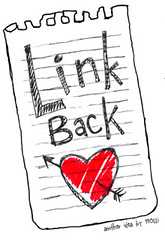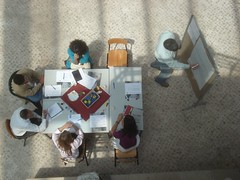Here is the third in a series of guest blogs I did for Darren Sidnick, reblogged here with his blessing!) focused on CoPs in a learning context –> From: Darren Sidnick’s Learning & Technology: Community – because without people, you just have a pile of content. Or worse… nothing! Part 1, part 2, part 3, part 4, part 5, part 6, part 7 , part 8 , part 9 and part 1o are all here on the blog.
Community – because without people, you just have a pile of content. Or worse… nothing!
 This is the third post surfacing a bit more about Community, Domain and Practice mentioned in the series on communities of practice (CoPs). This time we’ll “go social” and talk about the community aspect. From the “no duh” perspective, there is no community without people. Here is Wenger’s explanation of Community in the context of CoPs.
This is the third post surfacing a bit more about Community, Domain and Practice mentioned in the series on communities of practice (CoPs). This time we’ll “go social” and talk about the community aspect. From the “no duh” perspective, there is no community without people. Here is Wenger’s explanation of Community in the context of CoPs.
The community: from http://www.ewenger.com/theory/
In pursuing their interest in their domain, members engage in joint activities and discussions, help each other, and share information. They build relationships that enable them to learn from each other. A website in itself is not a community of practice. Having the same job or the same title does not make for a community of practice unless members interact and learn together. The claims processors in a large insurance company or students in American high schools may have much in common, yet unless they interact and learn together, they do not form a community of practice. But members of a community of practice do not necessarily work together on a daily basis. The Impressionists, for instance, used to meet in cafes and studios to discuss the style of painting they were inventing together. These interactions were essential to making them a community of practice even though they often painted alone.
Right off there are the practical implications of Community in the context of elearning.
- You have to find the people and, if they aren’t already connected or convened, make that happen. Is there an existing community you can tap into, or do you have to actually set one up? Are you ready for that?
- Members have to have some sort of relationship with each other – so there needs to be conditions for not just information exchange, but social interaction. How does that fit with your mission and role?
- Social interaction is neither linear, nor is it always neat and within the confines of structured things like “courses.” Are you ready for a little unorder?
- Relationships develop over time. Courses end? What are the boundaries you need to set and what can be open ended? How will that be supported?
These questions might give you pause – and for good reason, but lets also look at the benefits of community. From a learning theory perspective, a lot of learning is social, meaning it happens between us, not always as a solo activity. In fact some of us seem to need social learning more than others. When Etienne Wenger and Jean Lave coined the term communities of practice, it was part of their work on understanding learning and the importance of social learning. Again, from Wenger:
Social scientists have used versions of the concept of community of practice for a variety of analytical purposes, but the origin and primary use of the concept has been in learning theory. Anthropologist Jean Lave and I coined the term while studying apprenticeship as a learning model. People usually think of apprenticeship as a relationship between a student and a master, but studies of apprenticeship reveal a more complex set of social relationships through which learning takes place mostly with journeymen and more advanced apprentices. The term community of practice was coined to refer to the community that acts as a living curriculum for the apprentice. Once the concept was articulated, we started to see these communities everywhere, even when no formal apprenticeship system existed. And of course, learning in a community of practice is not limited to novices. The practice of a community is dynamic and involves learning on the part of everyone.
From http://www.ewenger.com/theory/
Community as curriculum — for me, that is a pretty juicy concept. So let’s just end this blog post at the edge of the cliff. What does that mean to you? How might you imagine your learners as community and thus as a way to extend and deepen your curriculum?
 Lest I be accused of taking everything too seriously, I want to remind everyone that today is
Lest I be accused of taking everything too seriously, I want to remind everyone that today is  Read the comments on this post
Read the comments on this post 
 In the first in our series on communities of practice, (CoPs) I briefly
In the first in our series on communities of practice, (CoPs) I briefly